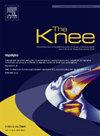Patients aged 80 and above face higher critical systemic complication rates after single-stage bilateral versus unilateral total knee arthroplasty: a nationwide database analysis
IF 2
4区 医学
Q3 ORTHOPEDICS
引用次数: 0
Abstract
Background
Single-stage bilateral total knee arthroplasty (SB-TKA) offers several benefits for patients with bilateral knee diseases, including reduced cumulative hospitalisation periods and costs. However, it is associated with increased mortality and postoperative complications. Patient selection criteria to minimise these risks remain unclear. This study aimed to identify age groups with increased risk of critical systemic complications after SB-TKA compared with unilateral TKA (U-TKA) using a nationwide database.
Methods
Data from inpatients undergoing TKA between 2010 and 2022 were obtained from the Diagnosis Procedure Combination database. The primary outcome was a composite of in-hospital death and systemic complications requiring additional procedures or interventions following TKA. To compare outcomes between the SB-TKA and U-TKA groups, stabilised inverse probability of treatment weighting (IPTW) using propensity scores was applied to balance baseline covariates. Subgroup analyses were conducted based on age categories (≤69, 70–79, and ≥80 years).
Results
During the study period, 25,161 SB-TKA patients and 317,037 U-TKA patients were identified. Stabilised IPTW analysis showed that the composite outcome during hospitalisation occurred more frequently after SB-TKA than after U-TKA (0.65 % vs. 0.44 %; risk ratio, 1.47; 95 % confidence interval, 1.21–1.78). Subgroup analysis revealed a significantly higher risk of the composite outcome in the SB-TKA group among patients aged ≥80 years (1.02 % vs. 0.59 %; risk ratio, 1.72; 95 % confidence interval, 1.28–2.31), while no significant differences were observed in patients aged ≤69 or 70–79 years.
Conclusion
SB-TKA is associated with higher risk of critical systemic complications compared with U-TKA in patients aged ≥80 years.
Level of Evidence: III.
80岁及以上患者在单期双侧与单侧全膝关节置换术后面临更高的严重系统性并发症发生率:一项全国数据库分析
背景:单期双侧全膝关节置换术(SB-TKA)为双侧膝关节疾病患者提供了一些好处,包括减少累计住院时间和费用。然而,它与死亡率和术后并发症的增加有关。将这些风险降至最低的患者选择标准仍不清楚。本研究旨在利用全国数据库确定与单侧TKA (U-TKA)相比,SB-TKA后严重系统性并发症风险增加的年龄组。方法从诊断程序组合数据库中获取2010 - 2022年住院TKA患者的数据。主要结局是院内死亡和TKA后需要额外手术或干预的全身性并发症的综合结果。为了比较SB-TKA组和U-TKA组之间的结果,使用倾向评分的稳定治疗加权逆概率(IPTW)来平衡基线协变量。根据年龄分类(≤69岁、70-79岁和≥80岁)进行亚组分析。结果在研究期间,共发现25161例SB-TKA患者和317037例U-TKA患者。稳定IPTW分析显示,SB-TKA术后住院期间的综合结局比U-TKA术后发生的频率更高(0.65% vs 0.44%;风险比,1.47;95%置信区间,1.21-1.78)。亚组分析显示,年龄≥80岁的患者中,SB-TKA组出现复合结局的风险显著更高(1.02% vs 0.59%;风险比,1.72;95%可信区间(1.28-2.31),而年龄≤69岁或70-79岁的患者无显著差异。结论在年龄≥80岁的患者中,sb - tka与U-TKA相比存在较高的严重全身并发症风险。证据水平:III。
本文章由计算机程序翻译,如有差异,请以英文原文为准。
求助全文
约1分钟内获得全文
求助全文
来源期刊

Knee
医学-外科
CiteScore
3.80
自引率
5.30%
发文量
171
审稿时长
6 months
期刊介绍:
The Knee is an international journal publishing studies on the clinical treatment and fundamental biomechanical characteristics of this joint. The aim of the journal is to provide a vehicle relevant to surgeons, biomedical engineers, imaging specialists, materials scientists, rehabilitation personnel and all those with an interest in the knee.
The topics covered include, but are not limited to:
• Anatomy, physiology, morphology and biochemistry;
• Biomechanical studies;
• Advances in the development of prosthetic, orthotic and augmentation devices;
• Imaging and diagnostic techniques;
• Pathology;
• Trauma;
• Surgery;
• Rehabilitation.
 求助内容:
求助内容: 应助结果提醒方式:
应助结果提醒方式:


